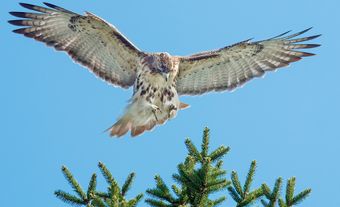Waterfowl is a general term used for members of the family Anatidae, composed of closely allied species commonly known as ducks, geese and swans. Scientists divide the family into 3 subfamilies, 2 of which are found in North America. The third, the primitive Australian Anseranatinae, contains the magpie geese (Anseranas semipalmata), which are not true geese.
Waterfowl have worldwide distribution and contain flightless species as well as others capable of long migrations. Some species, eg, northern pintail (Anas acuta), have very wide distribution; others are restricted to a few ponds on remote islands. Three species of swans, 5 of geese and 29 of ducks breed in Canada.
Waterfowl range in size from pygmy geese (Nettapus ssp.), averaging 300 g when fully grown, to North American trumpeter swans (Cygnus buccinator), exceeding 13 kg and having a wingspread of 250 cm.
In late summer as many as 80-100 million waterfowl are found in North America. Unfortunately, one duck species native to eastern Canada, the Labrador duck (Camptorhynchus labradorius), is now extinct.

 Share on Facebook
Share on Facebook Share on X
Share on X Share by Email
Share by Email Share on Google Classroom
Share on Google Classroom








